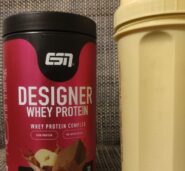Limescale catcher - what is it and what do i need it for?
Every household has at least one kettle or coffee maker. And just like any household appliance, these two must be cleaned regularly. In addition to the basic cleaning of these two devices, there is also the risk of limescale.
A so-called limescale trap can be used to reduce this risk and to clean your own devices, for example the kettle, and effectively remove the limescale. This, as the name suggests, catches the lime. But to understand how exactly a limescale catcher works and catches the limescale, it is necessary to understand what limescale actually is.
Lime catcher in comparison
So what is lime?
Lime is the composition of two ions, the calcium ion and the carbonate ion. This connection joins together to form solid crystal lattices, which are also known for short as "a salt". The name suggests that common table salt also belongs to this compound and thus both table salt and lime can dissolve in water. But: Due to the chemical connection between the ions of calcium and carbonate, lime is much more difficult to dissolve in water, in contrast to table salt.
This can be seen in such a way that at the beginning a few dissolved calcium and carbonate ions combine very quickly to form a solid ion crystal. This happens as soon as certain external conditions “prompt” you to do so. One of these external conditions is, for example, that the water temperature increases when you heat the water in the kettle.
Here is the explanation, why heating water leads to the binding crystals. Calcium and carbonate ions are found in our tap water. When the water is heated, one speaks in the field of chemistry of the shift of the "lime - carbonic acid - equilibrium" to the right, to the side with the solid lime.
Clearly speaking, this means that the ions arrange themselves on the surface, which of the solutions is adjacent, and become solid lime. In this case, this surface is the floor or wall of the kettle.
Lime is an uninvited guest in every kitchen. Because lime is created in a hurry and therefore by no means looks like a beautiful crystal. Its surface is rather rough, shapeless and porous, it looks white. This surface offers many small organisms, such as bacteria or fungi, space to multiply and live.
Is my water hard?
To descale your own kettle, you should know why and where the limescale comes from. Because the amount of lime clearly has to do with the tap water. In common parlance, we also know calcareous water as "hard" water, presumably because solid deposits can arise from this "hard" water.
The hardness of the water or the lime content of a water is determined with the help of the "Degree of hardness" determined, which can be determined in a chemical way. But you don't have to be interested in the calculation, because you can easily check the hardness of the tap water in your region in the network.
Stainless steel limescale trap
The smooth floors and walls of the kettle are ideal surfaces on which the first ions can settle. Stainless steel wool, on the other hand, consists of many fine ribbons and wires that are confused with one another. If you were to unfold all of these bands, you would see that, taken together, they offer a much larger surface area than the walls and floors of the water containers.
If you then put the steel wool on the bottom of the kettle, nine out of ten lime ions will settle on the freely available surface of the steel ring and only one ion would penetrate to the bottom of the kettle. With this "trick", the walls and floors of kettles and coffee machines calcify at least 10 times more slowly than without a limescale trap.
Descale the kettle
First of all, it should be emphasized that a limescale trap cannot prevent the limescale deposition procedure, but only slows it down. The limescale trap is used before lime ions settle on the inside of household appliances. Therefore the limescale catcher cannot of course remove any existing limescale, because it only catches ions. For this reason, there are certainly a few important points to consider before using a limescale trap in your kitchen for the first time.
The limescale catcher should only be used in advance if it is a device that is free of limescale or if it is a brand new container. In other words: the limescale catcher should either be used at the beginning of the purchase or not at all. It is of no use if you put a limescale catcher in a device that is already infested with limescale. Because, as already mentioned above, the limescale catcher can only slow down the formation and deposition of limescale.
In addition to descaling the kettle with the limescale collector, the limescale collector itself must of course also be descaled. This can be done in a number of ways. What you should know is that you can put an end to limescale deposits with any common acid. These tips are useful for decalcifying the limescale collector, but can also be used to decalcify containers.
Acetic or citric acid
Fill a bowl with water and add either acetic or citric acid according to the dosage instructions and add the limescale catcher. It goes without saying that as more lime has to be removed, the amount of acid also increases. After that, you have to wait patiently for a few hours.
Acetic acid can also be boiled so that the steam bubbles help loosen the limescale deposits from the steel wool more quickly.
Danger! Vinegar and citric acid are corrosive and should not get in the eyes.
The only and important disadvantage of acetic and citric acid is their distinct smell and taste. Certainly this taste is undesirable in your coffee or tea and so that you do not expect any surprises at the breakfast table in the morning, you should wash the limescale catcher very thoroughly.
Is the limescale catcher a health hazard?
Limescale catchers are made of rust-free stainless steel, which means they have an alloy that consists mainly of metallic iron and chromium and traces of other elements such as silicon, carbon and manganese. These elements are also found in our cookware, cutlery and kitchen surfaces. So the answer is no. Because if the answer were “yes”, many of our household appliances would pose a risk to our health.
In addition, it is particularly important that the limescale catcher, i.e. the steel wool, is made of stainless steel, otherwise it would rust when the water is boiled and could no longer do its job of removing the limescale. Steel is also made in such a way that it cannot dissolve, so that no stocks of wool can get into the boiling water. For this reason, it is safe to use the limescale collector.
Experience with the limescale catcher
Of course, such an online shop offers a large number of different models of limescale catchers. Each model has its own advantages and every household has the opportunity to choose the right and affordable object and then buy it. One of these models is the Hexi lime catcher. It catches the lime with the help of its mesh and works perfectly in both pots and kettles.
The Hexi limescale collector is much easier to use and more environmentally friendly than conventional descaling. Hexi is simply placed in the kettle or kettle and the lime gets caught between the fine stainless steel mesh instead of settling on the walls of the vessel. The Hexi limescale catcher also seems to be easy to clean. It can occasionally be put out to dry for cleaning or the lime can simply be knocked off.
Households say they have noticed an improvement with the lime in their kettle and kettle. It is also known that more and more people are turning to the cheaper version of the limescale collector, as it can be used more often without any problems. This saves you the money you would spend on the acids. Another advantage of using the limescale catcher is that it works without chemical additives and that it also does not leave a sour aftertaste.
I, too, can speak of experiences with the limescale catcher. My mother always used acetic acid to descale it. That was what she had grown up with, she had never thought of buying a limescale catcher. However, it happened a few times that she forgot to rinse the kettle again after descaling it with the acetic acid.
Then my father made himself a coffee in the morning and it tasted inedible, he didn't know that my mother had descaled the kettle overnight. Of course, we were all glad she didn't use a chemical solution to descale it. With this, drinking the coffee would probably have ended in a hazardous manner. My mother advises everyone against chemical solutions. She prefers to use the natural acetic acid, which she always stores at home anyway.
Shortly before I moved out, she instructed me in various things that I never did in the household, but which would then become important when living alone. This also included descaling the kettle. Of course she recommended her tried and tested home remedy, acetic acid.
But I knew that I would probably either forget to rinse the kettle thoroughly or I would forget to descale the kettle often enough at all.
So we informed ourselves on the net and are collecting a variety of models of limescale catchers in various online shops. They were available in different sizes so that they could fit on any bottom of the kettle. I read through the recommendations and then decided on the lime catcher Hexi. It was very easy to use. I would put it in the kettle just before heating the water for the first time and then wash it out occasionally or tap off the limescale. By laying the limescale catcher before using it for the first time, I wouldn't be able to forget to cheat.
Since then I have only had positive experiences with the limescale collector, because even if you forget to clean the limescale collector a few times, no limescale will settle on the inside walls of the kettle. In addition, the taste of the water is guaranteed to remain unchanged when using a limescale trap.
A limescale trap is also more environmentally friendly because you do not cause any rubbish or unnecessary dirt and you do not have to worry about cleaning. In terms of price, it is also much cheaper, as you pay the relatively low price once and then can use the same limescale trap for several months.
So, if you have had problems with the hardness of the water in your region in the past, the limescale catcher can only be the solution for you. If you have moved somewhere, then check the internet for the degree of hardness in your region beforehand and make sure that the purchase of a limescale catcher will actually be of use to you.
When this is done, you can conveniently choose a limescale trap that is adapted to your needs, preferably from home. And then you never have to worry about discovering limescale in the kettle again! Because the limescale catcher works for you and provides delicious water with a long life guarantee that does not even endanger your health.
Discover the top 10 of the best and best-selling limescale catcher products in 2024 on honest tests. We show a selection of the most popular items that have great customer reviews and value for money. Find the perfect limescale catcher product for your needs now!
Reading tips: coole DIY Projects | Fitness | You like product testing read?
- Test report: Tannus Armor puncture protection insert for bicycles
- Pore cleaner - remove blackheads from the face
- Fast charging with Power Delivery | USB-PD | 65W UGREEN Fast Charger
- Test: Carrera RC - Turnator Glow in the Dark
- Massage gun - help against back pain
- Peanut butter from Argentina | without palm oil | no added sugar
- Remove house dust - house dust removal
- Electric mulch vacuum bestseller 2024: The best and most popular in the top 10 comparison | Honest tests
- Illuminated Christmas villages: A highlight for your Christmas decorations
- Guide: LED grow lights for growing plants indoors
- Bathroom: Age appropriate bath | Bath gadgets
- Advice: cumin - cumin
* Product images & links | Source: Amazon PA API | Last update on 21.04.2024/XNUMX/XNUMX | * = Affiliate links | Prices quoted on this website may have changed. The actual price of a product can be found on the seller's website. Real-time updates are technically not possible. Prices including VAT plus shipping costs







